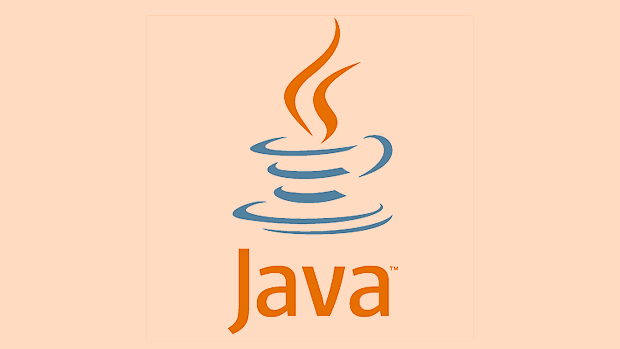Cloning in Java requires understanding shallow vs deep copying. 1. The default clone() method performs a shallow copy, duplicating the object but not its referenced objects, leading to shared references. 2. For deep copying, manually clone nested objects by overriding clone() in all related classes. 3. Alternatives like copy constructors, serialization, or libraries offer simpler solutions for complex cases. 4. Common issues include accessibility, handling immutable fields, and correctly copying collections. Modern projects often prefer copy constructors over clone().

Cloning an object in Java might seem straightforward, but if you're not careful, you can end up with shared references or incomplete copies. The key is understanding the difference between shallow and deep copying and knowing when to use each.

Understand the Default Behavior: clone() Does a Shallow Copy
Java provides the clone() method through the Object class. If you want to use it, your class must implement the Cloneable interface — otherwise, it throws a CloneNotSupportedException.
But here's the catch: by default, clone() only does a shallow copy. That means if your object contains references to other objects, those references are copied over, not the actual objects they point to.

For example:
class Person implements Cloneable {
String name;
Address address; // another object
public Person clone() {
return (Person) super.clone();
}
}In this case, both the original and the cloned Person will point to the same Address object. Changes made via one will affect the other.

So if you need a full copy, you have to handle nested objects yourself.
Make a Deep Copy When Needed
To do a true deep copy, you need to manually clone any referenced objects inside your clone() method.
Here’s how:
- Make sure all nested classes also support cloning.
- Override
clone()for each nested class. - In the parent class, explicitly clone the nested objects.
Example:
class Person implements Cloneable {
String name;
Address address;
public Person clone() {
Person p = (Person) super.clone();
p.address = this.address.clone(); // deep copy of Address
return p;
}
}
class Address implements Cloneable {
String city;
public Address clone() {
return (Address) super.clone();
}
}This way, both the Person and its internal Address are properly duplicated.
Note: This approach works well for small object graphs. If your object has many nested or complex dependencies, consider alternatives like serialization or libraries.
Consider Alternatives When Cloning Gets Tricky
If implementing clone() becomes too tedious or error-prone, there are simpler ways:
Manual copy constructor: Create a constructor that takes an existing instance and copies its values. It gives you full control and avoids some pitfalls of
clone().class Person { public Person(Person source) { this.name = source.name; this.address = new Address(source.address); } }Serialization trick: If your class implements
Serializable, you can serialize and deserialize the object to make a deep copy. Works well but may be slower.Use libraries: Tools like Dozer, ModelMapper, or even Jackson can help with deep copying complex objects.
- Forgetting to override
clone()aspublic— otherwise, you’ll get accessibility issues. - Not handling immutable fields correctly — sometimes they don’t need cloning.
- Using
clone()on collections — remember to copy lists, maps, etc., manually unless they’re immutable.
Watch Out for Common Gotchas
Also, keep in mind that the Object.clone() method is kind of outdated. Many modern Java projects avoid it entirely in favor of copy constructors or builders.
All right, that’s the core of cloning in Java. It’s not rocket science, but you do need to know what’s going on under the hood.
The above is the detailed content of How to properly clone an object in Java?. For more information, please follow other related articles on the PHP Chinese website!

Hot AI Tools

Undress AI Tool
Undress images for free

Undresser.AI Undress
AI-powered app for creating realistic nude photos

AI Clothes Remover
Online AI tool for removing clothes from photos.

Clothoff.io
AI clothes remover

Video Face Swap
Swap faces in any video effortlessly with our completely free AI face swap tool!

Hot Article

Hot Tools

Notepad++7.3.1
Easy-to-use and free code editor

SublimeText3 Chinese version
Chinese version, very easy to use

Zend Studio 13.0.1
Powerful PHP integrated development environment

Dreamweaver CS6
Visual web development tools

SublimeText3 Mac version
God-level code editing software (SublimeText3)

Hot Topics
 Difference between HashMap and Hashtable?
Jun 24, 2025 pm 09:41 PM
Difference between HashMap and Hashtable?
Jun 24, 2025 pm 09:41 PM
The difference between HashMap and Hashtable is mainly reflected in thread safety, null value support and performance. 1. In terms of thread safety, Hashtable is thread-safe, and its methods are mostly synchronous methods, while HashMap does not perform synchronization processing, which is not thread-safe; 2. In terms of null value support, HashMap allows one null key and multiple null values, while Hashtable does not allow null keys or values, otherwise a NullPointerException will be thrown; 3. In terms of performance, HashMap is more efficient because there is no synchronization mechanism, and Hashtable has a low locking performance for each operation. It is recommended to use ConcurrentHashMap instead.
 What are static methods in interfaces?
Jun 24, 2025 pm 10:57 PM
What are static methods in interfaces?
Jun 24, 2025 pm 10:57 PM
StaticmethodsininterfaceswereintroducedinJava8toallowutilityfunctionswithintheinterfaceitself.BeforeJava8,suchfunctionsrequiredseparatehelperclasses,leadingtodisorganizedcode.Now,staticmethodsprovidethreekeybenefits:1)theyenableutilitymethodsdirectly
 How does JIT compiler optimize code?
Jun 24, 2025 pm 10:45 PM
How does JIT compiler optimize code?
Jun 24, 2025 pm 10:45 PM
The JIT compiler optimizes code through four methods: method inline, hot spot detection and compilation, type speculation and devirtualization, and redundant operation elimination. 1. Method inline reduces call overhead and inserts frequently called small methods directly into the call; 2. Hot spot detection and high-frequency code execution and centrally optimize it to save resources; 3. Type speculation collects runtime type information to achieve devirtualization calls, improving efficiency; 4. Redundant operations eliminate useless calculations and inspections based on operational data deletion, enhancing performance.
 What is an instance initializer block?
Jun 25, 2025 pm 12:21 PM
What is an instance initializer block?
Jun 25, 2025 pm 12:21 PM
Instance initialization blocks are used in Java to run initialization logic when creating objects, which are executed before the constructor. It is suitable for scenarios where multiple constructors share initialization code, complex field initialization, or anonymous class initialization scenarios. Unlike static initialization blocks, it is executed every time it is instantiated, while static initialization blocks only run once when the class is loaded.
 What is the Factory pattern?
Jun 24, 2025 pm 11:29 PM
What is the Factory pattern?
Jun 24, 2025 pm 11:29 PM
Factory mode is used to encapsulate object creation logic, making the code more flexible, easy to maintain, and loosely coupled. The core answer is: by centrally managing object creation logic, hiding implementation details, and supporting the creation of multiple related objects. The specific description is as follows: the factory mode handes object creation to a special factory class or method for processing, avoiding the use of newClass() directly; it is suitable for scenarios where multiple types of related objects are created, creation logic may change, and implementation details need to be hidden; for example, in the payment processor, Stripe, PayPal and other instances are created through factories; its implementation includes the object returned by the factory class based on input parameters, and all objects realize a common interface; common variants include simple factories, factory methods and abstract factories, which are suitable for different complexities.
 What is type casting?
Jun 24, 2025 pm 11:09 PM
What is type casting?
Jun 24, 2025 pm 11:09 PM
There are two types of conversion: implicit and explicit. 1. Implicit conversion occurs automatically, such as converting int to double; 2. Explicit conversion requires manual operation, such as using (int)myDouble. A case where type conversion is required includes processing user input, mathematical operations, or passing different types of values ??between functions. Issues that need to be noted are: turning floating-point numbers into integers will truncate the fractional part, turning large types into small types may lead to data loss, and some languages ??do not allow direct conversion of specific types. A proper understanding of language conversion rules helps avoid errors.
 Why do we need wrapper classes?
Jun 28, 2025 am 01:01 AM
Why do we need wrapper classes?
Jun 28, 2025 am 01:01 AM
Java uses wrapper classes because basic data types cannot directly participate in object-oriented operations, and object forms are often required in actual needs; 1. Collection classes can only store objects, such as Lists use automatic boxing to store numerical values; 2. Generics do not support basic types, and packaging classes must be used as type parameters; 3. Packaging classes can represent null values ??to distinguish unset or missing data; 4. Packaging classes provide practical methods such as string conversion to facilitate data parsing and processing, so in scenarios where these characteristics are needed, packaging classes are indispensable.
 What is the `final` keyword for variables?
Jun 24, 2025 pm 07:29 PM
What is the `final` keyword for variables?
Jun 24, 2025 pm 07:29 PM
InJava,thefinalkeywordpreventsavariable’svaluefrombeingchangedafterassignment,butitsbehaviordiffersforprimitivesandobjectreferences.Forprimitivevariables,finalmakesthevalueconstant,asinfinalintMAX_SPEED=100;wherereassignmentcausesanerror.Forobjectref






